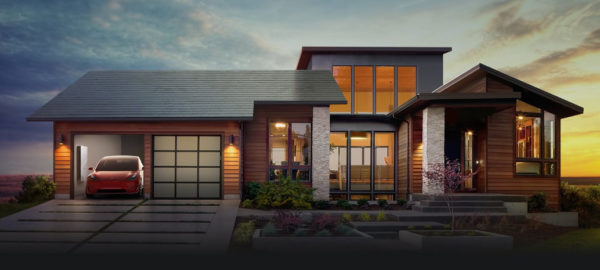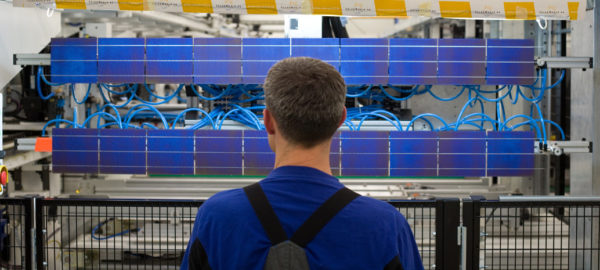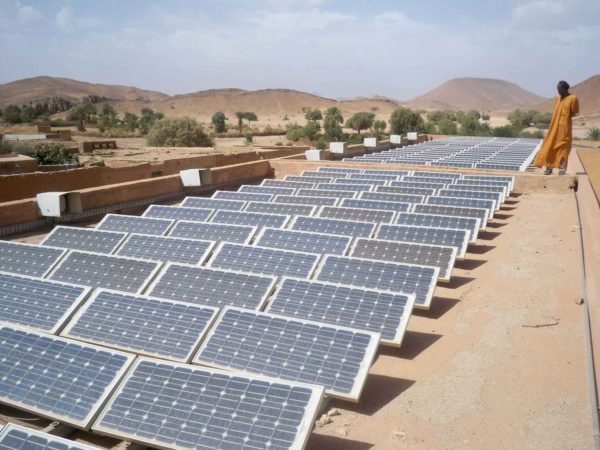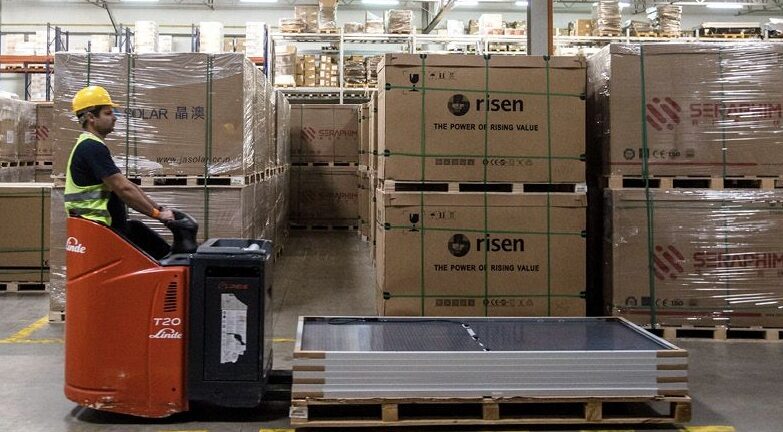There’s a dangerous tendency among some sections of the liberal media to paint everything that President Trump does as stupid, regressive and ill-informed, purely because, well, it’s Donald Trump.
Why dangerous? Well, these same sections of the media called the U.S. election wrong, just like they had Brexit last summer, and thus that should have been reason enough to at least attempt to understand the viewpoints of others. After all, what could be more liberal than that?
But then, but then… since taking office, Trump has consistently proven his critics correct, stumbling from stupid, regressive and ill-informed policy to the next, seemingly intent on condensing four years-worth of Talk Show host ammunition into his first 100 days.
Trump’s latest facepalm moment came this week during the signing of the executive order on energy. One of The Donald’s brashest rallying calls during the election campaign was to bring back jobs to the nation’s decimated coal industry – completely ignoring the market realities that have seen it reduce in size these past few years.
Consider the facts (that’s f-a-c-t-s, Mr. Trump): the solar industry in the U.S. employs more than 260,000 people. In 2015, the number of coal mining jobs fell below 66,000. Given those numbers, you would think President Trump would have waxed lyrical this week about solar being a great American success story.
But…what's the Mexican for ‘nothing'? Trump is unconcerned with the strength of the U.S. solar sector, and instead appears to believe his own lies about reviving coal mining jobs at a time when it is cheap natural gas – not liberal elites, fake news or even renewables – that is destroying coal jobs.
pv magazine USA’s Christian Roselund took Trump to task on this matter, so if you’re in the mood for an informative and scathing tirade that leaves the U.S. President looking plenty foolish, then look no further.
Tesla’s ruthless approach
Maybe Trump’s solar blind spot has something to do with the fact that Elon Musk is an immigrant (the South African-born, former Canadian-citizen-holding 45-year-old only became ‘Merkan in 2002). Yeah, that could be it. Because why else wouldn’t the President laud this entrepreneurial whizz-kid who has created some of the most exciting and innovative American brands since Apple?

Musk’s latest headline grabber arrived at the tail-end of last week, when the Tesla CEO tweeted that the company will begin taking orders for its Solar Roof product in April. Musk has created of an atmosphere of mystery around Tesla and its products, like some sort of energy and transportation Willy Wonka. It’s a bit maddening for journalists trying to cover the company, but appears to be working to build buzz around its products.
And like Tesla’s cars, the Solar Roof looks to be a luxury product. While Elon Musk has stated that the Solar Roof product will likely cost less to manufacture and install than a “normal” roof – even without the electricity generated – it should be noted that the Solar Roof will imitate slate, terra cotta and tile roofs. These are the most expensive roofs available, with Bloomberg estimating that these materials cost as much as 20x more than asphalt shingles.
In the solar industry there is no shortage of skepticism about the Solar Roof, given the number of building integrated photovoltaic (BIPV) products that have failed over the years. And yet despite the graveyard of former BIPV designs, Musk appears to be giving new life to the concept, as evidenced by the launch of a new lightweight BIPV panel by Suntech Founder Dr. Zhengrong Shi.
How low can you go, SolarWorld?
Reasonably solid financial results published by German firm SolarWorld this week were just a front for a bold pledge: the company hopes to drive radical cost redutions this year. In February, CEO Frank Asbeck announced that SolarWorld intended to focus on monocrystalline PERC products in the future and to exit the multi crystalline business entirely.

This was also confirmed in the preliminary results. The first steps in this direction have already been made, with the concentration of the manufacturing activities at the company’s production sites in Germany. Ingot and cell production will be located in Arnstadt, in the region of Thuringia, while wafer and module manufacturing will be concentrated in Freiberg, Saxony.
The module factory in Freiberg will be halted or relocated this year. The company said it will continue to manufacture bifacial modules in the future, as part of its plan to focus on monocrystalline products.
“Focusing is the leverage for more radical cost reductions than were previously possible,” wrote Asbeck in the report. The company aims to reduce costs in almost all its divisions. The plan aims at expanding the most competitive production areas in order to achieve economies of scale more quickly, eliminate redundancies and simplify processes.
At the same time, SolarWorld said it will cut 400 full-time jobs over the next two years. Last year, the company’s workforce increased to 3,000.
Here for the beer
Sun and beer: one of the world’s best combos. So why has it taken so long for some of the biggest breweries and drinks producers to, ahem, hop on to the PV bandwagon? Refreshingly, AB InBev has at yeast begun the process, brewing up a plan to become 100% renewable-powered by 2025.

Better known as Anheuser-Busch, the company reported revenues of $46 billion in 2016 and has a huge presence through its brands, including Budweiser, Corona, Stella Artois and Beck’s. According to the RE100 campaign the move will make it largest corporate direct purchaser of renewable energy in the consumer goods sector.
“Climate change has profound implications for our company and for the communities where we live and work,” said AB InBev CEO Carlos Brito.
The company’s first purchase of renewable energy will be from a wind farm in Mexico, however the company is expected to purchase both wind and solar for its operations in Brazil, Mexico, South Africa and other nations. AB InBev’s commitment is expected to increase the wind and solar capacity in Mexico alone by 5%.
Currently AB InBev gets 10% of its electricity from on-site fossil fuel generation, so the commitment to only purchase renewable energy means that its facilities will be 90% powered by renewable energy in 2025.
Algeria solar plans get jeered
The recently announced 4 GW solar plan by the Algerian government drew cheers from around the world, but within the North African country there has been scepticism this week.
Mourad Louadah, an Algerian entrepreneur which is also president of the renewable energy division of local trade industry association Forum des Chefs d’Entreprise (CFE), said that the 4 GW tender for solar projects announced by the government is doomed to fail.

In an interview with local radio station Radio M, Louadah said that there’s the real risk that the tender wouldn’t even be launched, although the publication of the tender’s documents is expected this week or the next week.
Louadah claims that the domestic content requirement quota included in the tender will make it impossible for project developers to offer low bids and, at the same time, make the investments to set up solar module manufacturing facilities across the country.
“Under these conditions,” Louadah said, “the projects will not be bankable.” This, Louadah added, will apply especially to Algerian solar companies, while foreign solar players would eventually build solar module assembly factories, which would be closed after completion of the projects.
Furthermore, Louadah said that Algeria has not the expertise to manage the three 1.35 GW tenders announced for the 4 GW plan and that tenders allocating up to 500 MW of PV capacity would have been a more feasible solution.
And in other news…
Danish firm Danfoss has partnered with GE to make SiC solar modules in New York, Australia is on the cusp of commencing construction of the world’s largest solar+storage plant, and pv magazine’s video reporting from the Energy Storage Europe show is well worth a look. Have a great weekend, and try not to be too hoodwinked by the news on April 1.
This content is protected by copyright and may not be reused. If you want to cooperate with us and would like to reuse some of our content, please contact: editors@pv-magazine.com.



By submitting this form you agree to pv magazine using your data for the purposes of publishing your comment.
Your personal data will only be disclosed or otherwise transmitted to third parties for the purposes of spam filtering or if this is necessary for technical maintenance of the website. Any other transfer to third parties will not take place unless this is justified on the basis of applicable data protection regulations or if pv magazine is legally obliged to do so.
You may revoke this consent at any time with effect for the future, in which case your personal data will be deleted immediately. Otherwise, your data will be deleted if pv magazine has processed your request or the purpose of data storage is fulfilled.
Further information on data privacy can be found in our Data Protection Policy.